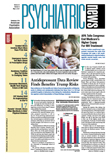Can a single measure predict suicidality in adolescents? Methods of assessing suicidality often do not lead to the same conclusions, so researchers tested several standard self-report methods to try to gauge their predictive validity in hospitalized, suicidal young people.
All of the methods proved useful in predicting suicidality, but some were more effective than others, according to Alissa C. Huth-Bocks, Ph.D., an assistant professor of psychology at Eastern Michigan University in Ypsilanti, and colleagues. Their work appeared in the March Journal of the American Academy of Child and Adolescent Psychiatry.
The authors queried 289 adolescents aged 12 to 17 years in private or university psychiatric hospitals in the Midwest between 1998 and 2000. About 54 percent had attempted suicide, and 46 percent had expressed suicidal intent or ideation in the previous month. An average of six months after discharge, 232 patients were available for follow-up.
Several tests were used to predict suicidality: the Reynolds Adolescent Depression Survey (RADS—assessing depressive symptoms), the Beck Hopelessness Scale (BHS—negative expectations or attitudes), the Suicidal Ideation Questionnaire-Junior (SIQ-JR—suicidal thoughts), and the Suicide Probability Scale (SPS—general suicide risk). The Spectrum of Suicidal Behavior Scale (SSB) documented the patient's history of suicidality.
Higher scores on all the tests predicted suicidal thoughts and behaviors and suicide attempts between discharge and the six-month assessment. Overall, all the measures told the same story regardless of gender or race, although among girls the RADS more closely correlated with the BHS than it did among boys.
While all the measures correlated with suicidality at follow-up, no test was better than the SPS, whose cutoff score gave “an especially strong sensitivity rate with an adequate corresponding specificity,” said the authors. The SPS is a 36-item questionnaire about hopelessness, suicidal ideation, negative self-evaluation, and hostility. The RADS and BHS were less effective at predicting suicidality, and adjustments that improved sensitivity served to decrease specificity. The SIQ-JR yielded “moderate sensitivity but fair specificity,” they said. Sensitivity is the proportion of affected individuals who record a positive test, while specificity represents the true negative events in proportion to the total of true negatives and false positives.
The SPS has been used less frequently with adolescents compared with other tests, said the authors. However, they said, “SPS may perform well because the items. .include more subtlety with respect to suicidality and assess a broad combination of constructs theoretically linked to suicide.”
The less obvious nature of the questions might also avert manipulation by adolescents who want to stay in the hospital by falsely asserting suicidality, they added.
The SPS, in which the clinician fills in the patient's answers, probably worked best because it was the only instrument in this study that picked up hostility, aggressivity, or impulsive behavior, said David Shaffer, M.D., the Irving Philips Professor of Child Psychiatry and professor of psychiatry and pediatrics in the Division of Child and Adolescent Psychiatry at Columbia University Medical Center, in an interview. “A lot of people think suicidality is a trait, but it's really a mode of response to a particular provocation. It is really about how someone loses control under certain circumstances and does things that are counterintuitive.”
A history of suicidality is the best predictor of suicidality in the future, but actually predicting a rare event, like a suicide attempt, is not easy, said Shaffer.
Suicide assessment is a complex process and should be based on more than one source of information, said the researchers, but a brief, self-report measure may help in predicting which patients are more likely to think about or act on suicide. However, the study results did not support using more than one of these self-report instruments, wrote the authors.
An abstract of “Assessment of Psychiatrically Hospitalized Suicidal Adolescents: Self-Report Instruments as Predictors of Suicidal Thoughts and Behavior” is posted at<www.ncbi.nlm.nih.gov/>.▪
